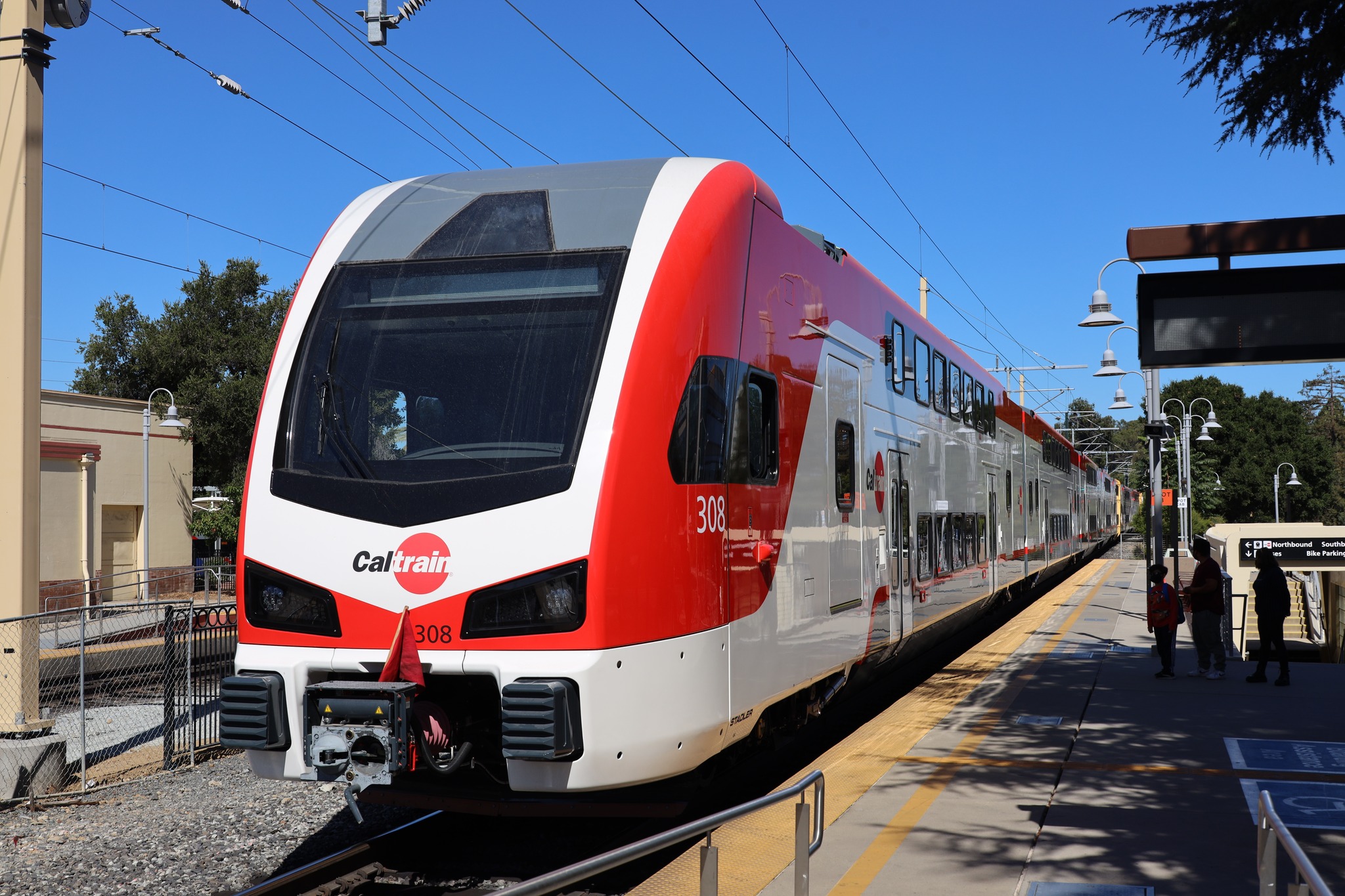 The California Transportation Commission has approved funding for one Stadler battery-electric train (BEMU) and related maintenance and charging facility upgrades, enabling Caltrain operator to expand zero emission service to non-electrified tracks.
The California Transportation Commission has approved funding for one Stadler battery-electric train (BEMU) and related maintenance and charging facility upgrades, enabling Caltrain operator to expand zero emission service to non-electrified tracks.
The 4-car vehicle consists of three passenger cars and one battery-head, which houses the battery and power equipment.
The authority committed funding from an USD 80 million award from the California State Transportation Agency (CalSTA) which will allow Caltrain to introduce emission-free trains on both electrified service area of the San Francisco – San José corridor as well as the portion of the corridor from Tamien station in San Jose to Gilroy which is not electrified.
The train will be acquired under a contract signed with Stadler for the supply 19 seven-car EMUs and includes an option for a BEMU pilot. If the project will be feasible, Caltrain would order six BEMUs.
The BEMU train will charge while the train runs on overhead power in the electrified service areas and then use battery charge to travel “off-wire” on non-electrified track areas. This will lead the way for Caltrain to operate a fully zero-emission service in the future.
“California continues to lead the transition to a clean, electrified transportation system, this time with the nation’s first battery-electric multiple unit passenger rail train,” California Transportation Secretary Toks Omishakin said.
Before this option, Caltrain would have had to use diesel trains on the non-electrified corridor. The funding award from CalSTA also covers the cost of testing at the Transportation Test Center in Pueblo, Colorado, and upgrades to the San Jose Central Maintenance Facility and Gilroy layover and station area to facilitate charging and maintenance.
The demonstration of the Stadler battery-electric train in-service will be the first time this bi-level technology is in operation on a commuter train anywhere in the United States. The trainset is also expected to be tested in other intercity and regional rail corridors, if feasible.
“We’re excited to be the first in the nation to pilot this bi-level hybrid electric and battery service to extend our zero-emission service beyond our electrified service areas. With the BEMU we will not only create a more sustainable and environmentally friendly service, but also faster and more reliable travel times for riders,” Jeff Gee, Caltrain Board Chairman said.
The current demonstration plan will have the BEMU charge while in operations between San Francisco and San Jose, and then operate using battery power on non-electrified tracks between San Jose and Gilroy, with intermittent demonstration trips to Salinas. The goal is to show successful service operations and learn from the implementation to provide a roadmap for future BEMU operations and procurements.
If successful, BEMUs could replace aging diesel locomotives on non-electrified tracks. This includes potential improved service times to Gilroy resulting from better performance of the BEMU compared to diesel locomotives, improved travel times on the entire corridor and decreased service costs resulting from removing diesel locomotives from service, and increased reliability should overhead power systems fail or utilities experience outages.
These EMU trains along with the BEMU demonstration will allow Caltrain to run over 90% of its service with electric trains, benefiting passengers and communities throughout the corridor.
The train will go into operation after additional testing and certifications from regulatory agencies.
Share on:



